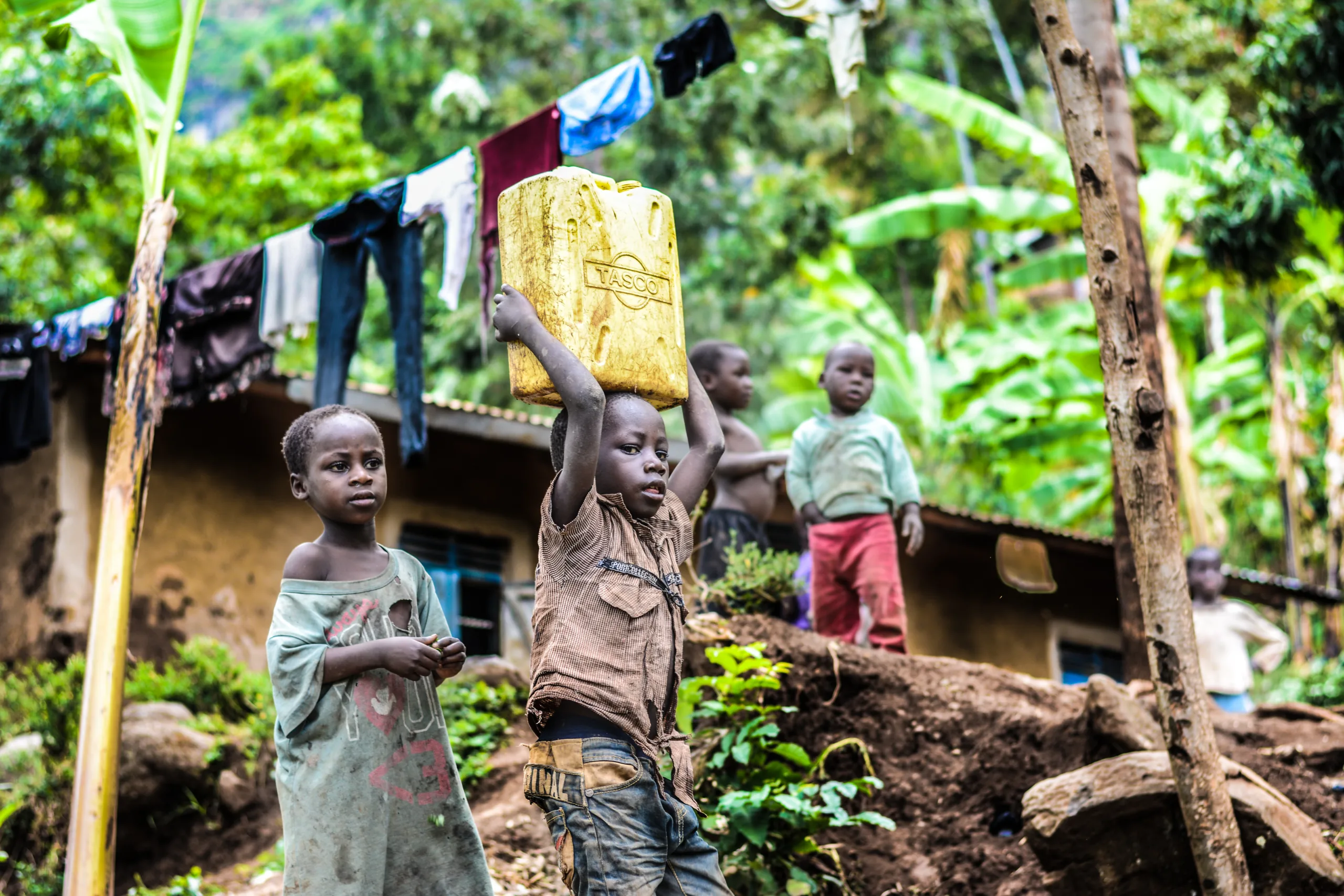Do you ever wonder how many trees can be planted on an acre of land? With the increasing concern about climate change and deforestation, it is important to understand how many trees can fit onto an acre in order to make the most of our limited land resources. This article will provide insight into the number of trees that can fit on one acre and the factors that must be considered when planting a tree. Additionally, this article will discuss the various benefits of planting trees on an acre and why it is important to do so.
Approximately 160-200 trees can fit on one acre of land.
How Much Space Is Needed For Growing Trees On An Acre?
Growing trees on an acre of land can be a great way to create an attractive landscape, provide shade, and improve the environment. However, when planning out how much space is needed for growing trees on an acre of land, it is important to understand the size and spacing of your chosen species.
The size of the tree and its mature height will determine the amount of space needed for growing it on an acre of land. Generally speaking, larger trees will require more space than smaller ones. Additionally, if you are planting multiple trees in a row or in close proximity, you will need to factor in additional spacing between them as well as account for their eventual mature size.
In general, trees that reach a mature height of 40 feet or more should be placed at least 25 feet apart from each other to ensure that they have enough room to grow without overcrowding. Trees that reach a mature height between 10 and 20 feet should be placed at least 15 feet apart. Trees that reach a mature height less than 10 feet should be planted at least 8 feet apart from each other.
When planting trees on an acre of land, it is also important to consider the amount of sunlight they will receive and make sure they are placed in appropriate locations in order to maximize their growth potential and ensure their health. The best locations for tree planting are those that receive direct sunlight for at least 6 hours per day with no obstructions such as buildings or tall shrubs blocking their access to sunlight.
Finally, it is also important to consider other factors such as soil type and water availability when choosing the location for planting your trees on an acre of land. The soil type must be suitable for the species you are planting and must have adequate drainage; otherwise your trees may not survive or thrive long-term due to root rot or other moisture-related issues. Additionally, water availability must be sufficient enough to support the needs of your chosen species; otherwise additional irrigation may need to be provided during periods with little rainfall or drought conditions.
Overall, when planning out how much space is needed for growing trees on an acre of land it is important to consider the size and spacing needs of your chosen species as well as factors such as soil type, water availability, amount of sunlight received and any potential obstructions such as buildings or tall shrubs blocking the access to sunlight. By taking all these factors into account when planning out your tree planting project you can ensure that your trees have enough room to grow without overcrowding and have access to adequate resources so they can thrive long-term
What Type of Trees Can Be Planted On One Acre?
One acre of land can provide ample space to grow a variety of trees, depending on the desired effect and available resources. The type of tree chosen will depend on the purpose, soil type, climate and other factors. Fruit trees like apple, peach, cherry and pear can be planted in an acre to provide both shade and edible fruit. Shade trees such as oak, maple, linden and elm are ideal for providing a shady area for outdoor activities. Ornamental trees such as dogwood, Japanese maple and flowering cherry can be planted to add color and beauty to the landscape. Evergreen trees like fir and spruce are a good choice for providing year-round greenery. Even more unusual varieties such as redbud, ginkgo biloba or crape myrtle can be used to create an interesting landscape in an acre.
No matter what type of tree is chosen for planting on one acre of land, it is important to consider how much space the mature tree will need so that it is not crowded by other plants or structures. It is also important to research what type of care each particular species requires in order to ensure healthy growth and prevent disease outbreaks. With proper planning and care, one acre of land can provide a beautiful array of trees that will thrive for many years.
What Are The Benefits Of Planting Trees On An Acre?
Planting trees on an acre of land offers a number of benefits. Trees have an important role to play in protecting and preserving the environment, and planting them on a single acre can help to create a healthier, more sustainable environment. Trees help to regulate climate by trapping carbon dioxide and releasing oxygen into the atmosphere. This helps to reduce the amount of air pollution, which can lead to improved air quality. Trees also provide shade and shelter from wind, helping to keep temperatures cooler in summer and warmer in winter. Planting trees on an acre can also help to protect wildlife habitats by providing food and shelter for wildlife, while also providing a space for wildlife to move around safely within their natural habitats.
Trees also play an important role in helping to prevent soil erosion by slowing down wind velocity and stabilizing soils with their roots. This helps to prevent the loss of valuable topsoil, which is essential for plant growth. Planting trees on an acre of land can also improve water quality by filtering pollutants from runoff before it reaches nearby water sources such as lakes or rivers. In addition, trees can help reduce noise levels in urban areas by providing a natural sound barrier.
The benefits of planting trees on an acre extend beyond environmental protection as well. Trees can provide aesthetic value by adding beauty and character to a landscape, while their leaves can help absorb pollutants from the air. Planting trees on an acre can also increase property values as well as create additional privacy for homeowners living nearby.
Location Considerations
When planting trees on an acre, the location of each tree is a critical consideration. It is important to ensure that the tree has proper access to sunlight and water, as well as adequate room to grow without crowding other trees. In addition, it is important to think about the potential for roots to cause damage to nearby structures or underground utilities. Finally, if planting a species of tree that will eventually become large, it is important to consider how much space the mature tree will need and the potential for shading any nearby structures or areas on your property.
Soil Considerations
The type of soil in which you are planting your trees is also an important consideration when planting trees on an acre. Different types of trees require different types of soil, and it is important to ensure that the soil has adequate drainage and nutrients for the species of tree you are planting. Additionally, if you are intending to plant multiple species of trees on your property, it is important to consider how their different root systems may affect one another in terms of competition for water and nutrients.
Tree Species
The type of tree species you choose also plays an important role when considering how best to plant trees on an acre. Different species have different requirements in terms of sunlight, water and soil conditions, so it is important to choose a species that will thrive in your particular climate and environment. Additionally, some species may be more prone than others to disease or pests in your area, so researching the different varieties before selecting a specific one can help you avoid any potential problems down the road.
Maintenance Requirements
Finally, it is important to consider the maintenance requirements of each tree when planting them on an acre. Proper pruning and fertilizing can help keep your trees healthy and pest-free over time, so be sure to research any specific needs for each species before planting them on your property. Additionally, if you live in an area prone to extreme weather conditions such as high winds or heavy rainfall, be sure to take preventive measures such as staking or mulching around each tree so they are better able withstand these conditions without sustaining damage.

How Long Does It Take For A Tree To Grow On An Acre?
The length of time it takes for a tree to grow on an acre of land depends on the type of tree, its growing conditions, and the climate it is exposed to. Generally speaking, a young tree will take anywhere from five to ten years before it reaches maturity. Trees that are more cold-tolerant may take longer to reach maturity than those which are more heat-tolerant.
The care and attention given to a young tree can also have an effect on its growth rate. Trees that are well-watered, pruned regularly, and given proper soil nutrients will usually grow faster than those that aren’t given these treatments. If the conditions and climate are just right, some trees may be able to reach mature size much sooner than others.
It’s also important to note that not all trees grow at the same rate. Some species of trees grow faster than others, while some take longer to reach maturity. For example, oak trees can take up to 20 years before they reach full size, while certain types of evergreens can take as little as two or three years before they’re fully grown.
In most cases though, it’s safe to assume that a tree planted on an acre of land will take at least five years before it reaches full maturity. With proper care and attention, some trees may even be able to reach their full size in half this time or less. Regardless of the species or the growing conditions though, all trees will require patience and time in order for them to reach their full potential.
What Is The Average Yield Of A Tree Grown On An Acre?
The average yield of a tree grown on an acre depends on several factors, including the type of tree, the climate, and the soil quality. Generally speaking, trees that are grown in ideal conditions produce higher yields compared to trees that are not. Trees that are grown in areas with a mild climate tend to produce more fruit than those grown in areas with extreme temperatures. Trees also require adequate water and nutrients to thrive, so soil quality is a major factor in determining yield.
Fruit bearing trees such as apple, peach, and cherry can typically produce anywhere from 30-90 bushels per acre depending on these factors. Nut trees such as walnut and pecan can produce up to 100 bushels per acre when grown in ideal conditions. Shade trees like oak and maple can grow up to 200 cubic feet of wood per acre each year.
Overall, the average yield for a tree grown on an acre will depend greatly on the type of tree being grown and the local conditions that it is growing in. By taking into account all of these factors, farmers and gardeners can maximize their yields and get the most out of their land.
Nutrients Needed for Planting Trees on an Acre
When planting trees on an acre, it is important to ensure that the soil is properly nourished with the necessary nutrients to enable healthy and sustained growth. This involves providing the necessary quantities of nitrogen, phosphorus, and potassium, as well as other essential minerals such as calcium, magnesium, and sulfur. Nitrogen is essential for foliage growth and photosynthesis and should be added to the soil in the form of fertilizer or manure. Phosphorus is important for root development and should be applied before planting. Potassium is necessary for overall plant health and helps trees resist disease, while calcium helps trees absorb other minerals more effectively. Magnesium helps activate enzymes that are essential for healthy growth while sulfur assists in nutrient uptake.
In addition to these primary nutrients, it is also important to ensure that micro-nutrients are present in sufficient quantities. These include iron, manganese, boron, zinc, copper, molybdenum, cobalt and chlorine. Iron helps with chlorophyll production while manganese assists in photosynthesis processes by helping reduce nitrates into amino acids. Boron aids in nutrient transport throughout the tree while zinc helps promote strong stems and foliage production. Copper aids in respiration processes while molybdenum aids in nitrogen fixation. Cobalt aids in maintaining healthy root systems while chlorine helps regulate water levels within the tree’s cells.
Providing these essential nutrients will help ensure that trees planted on an acre are able to grow properly and sustainably over time. It is important to keep a close eye on soil fertility levels so that any deficiencies can be quickly addressed before they become too severe and negatively impact tree growth. Regular monitoring of soil pH levels can also help identify any potential nutrient deficiencies before they become an issue so that corrective action can be taken quickly if needed.

Conclusion
The number of trees that can grow on one acre depends on a number of factors including the type of tree, the soil, and the climate. Trees can also be planted at different densities to accommodate different growth rates and desired uses. Generally, smaller trees can be planted more densely than larger trees. Additionally, adjusting the spacing between trees can help create an optimal environment for each species to thrive.
Ultimately, careful planning is needed when planting trees on an acre of land to maximize their growth potential and ensure the health of the entire ecosystem. Planting a variety of different species with different growth requirements and spacing can help create an ideal environment for all types of trees to grow in harmony and provide long-term benefits for both people and wildlife.
Each acre has unique characteristics that will determine how many trees it can sustainably hold. It is important to take into consideration all factors before deciding how many trees should be planted on any given acreage. With appropriate planning and thoughtful management practices, any acre can become a forest filled with healthy, vibrant trees that will benefit both people and wildlife for generations to come.
Mark Hoffman is a dedicated arborist and tree care specialist with over a decade of experience. His love for trees began when he visited Yosemite National Park as a teenager and was awestruck by the giant sequoias. Mark pursued his passion by studying forestry at Michigan Technological University, where he earned a Bachelor of Science degree.
Since then, he has worked tirelessly in the field of arboriculture, helping to preserve and protect trees in his community. His expertise and dedication have made him a respected leader in the industry and a valuable resource for anyone seeking advice on tree care.
